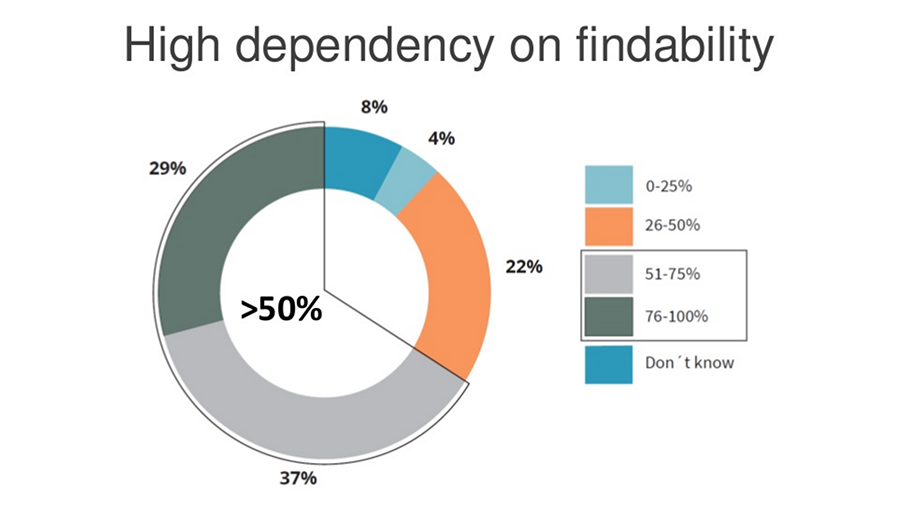Imagine walking into a library and finding books with no titles or apparent organization. Or a grocery store with no labeling on the food packages or labeling of the aisles. How would you feel? Frustrated? Lost? Annoyed? Probably all of the above. In the grocery story example, you’d likely leave without purchasing anything and go in search of another grocery store that does a better job at making it easy to find what you are looking for.
What does this have to do with findability?
Wikipedia defines findability as follows:
Findability is a term for the ease with which information contained on a website can be found, both from outside the website (using search engines and the like) and by users already on the website.
So in the case of the library and grocery store examples, findability could be defined as how easy it is to find the location of the library and grocery store and then how easy it is to find the books and food, respectively.
Why you should care?
Based on a 2016 survey conducted by Findwise, two-thirds of respondents reported that more than 50% of employees depend on findability to complete their daily work.

Source - SlideShare
When users visit a website, it’s typically to find (or search for) something or to solve a problem. The findability of your website or intranet will drive how easily users can achieve this. As with the library and grocery store examples, if your users can’t find what they are looking for or if a solution seems nowhere to be found, they will likely leave. And quite possibly not come back.
Put another way,
- If your users can’t find what they are looking for, you can expect a loss in existing customers and new customers
- If your employees can’t find what they are looking for, you can expect a loss in productivity
And this translates to a loss of dollars. Potentially lots of them. By putting in the time and resources to improve findability, you can expect a strong ROI.
Metadata to the rescue!
There are many things you can do to improve findability: create quality content, provide context, improve the search experience, provide well thought out navigation, and more.
To improve search and navigation, metadata is key. So let’s focus on those.
Search
One of the best ways to improve the search experience is with the use of metadata. However before you can define your metadata, you need to run some analytics and figure out what your users search for, how they search, and what terms they use. This will drive the metadata that you define.
Once you’ve done your homework, you can determine what metadata to capture and how to use it to improve the search experience. Will you apply keywords to your content? Will you build in search filters?
Navigation
Metadata is not limited to improving search. It’s also an invaluable resource for improving navigation. All of the hard work you do to define your metadata can also be used to define a taxonomy. Using those most commonly searched terms, you can categorize and label your content to build your taxonomy and effectively design your navigation.
Final Thoughts
Improving findability is worth your attention and investment. And defining and applying metadata will help you get there.



